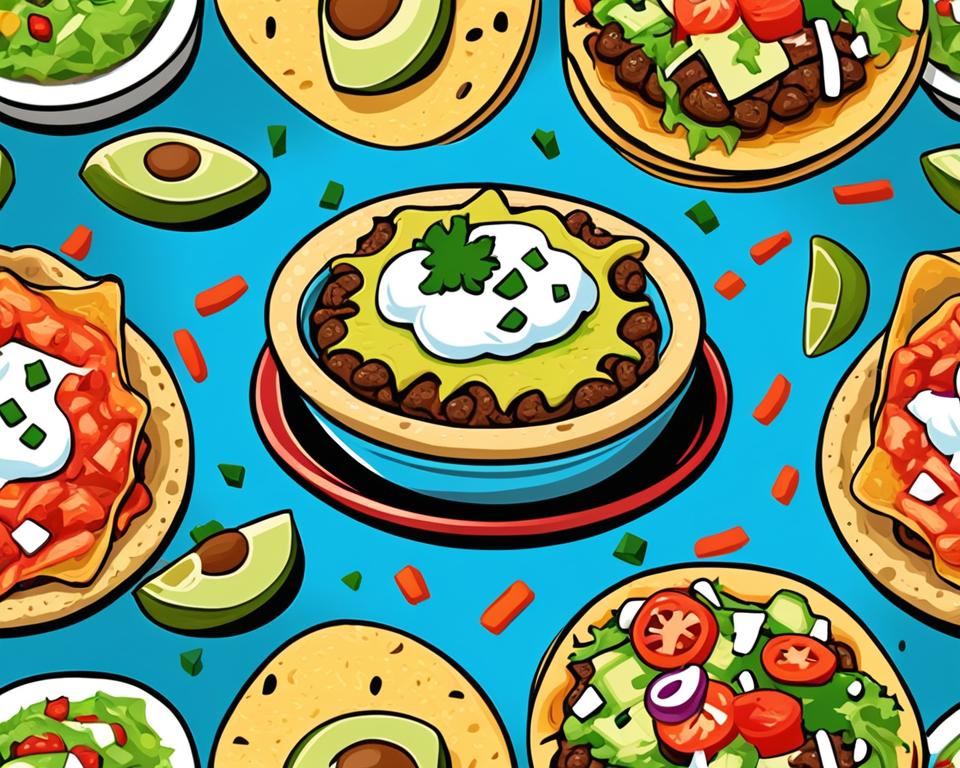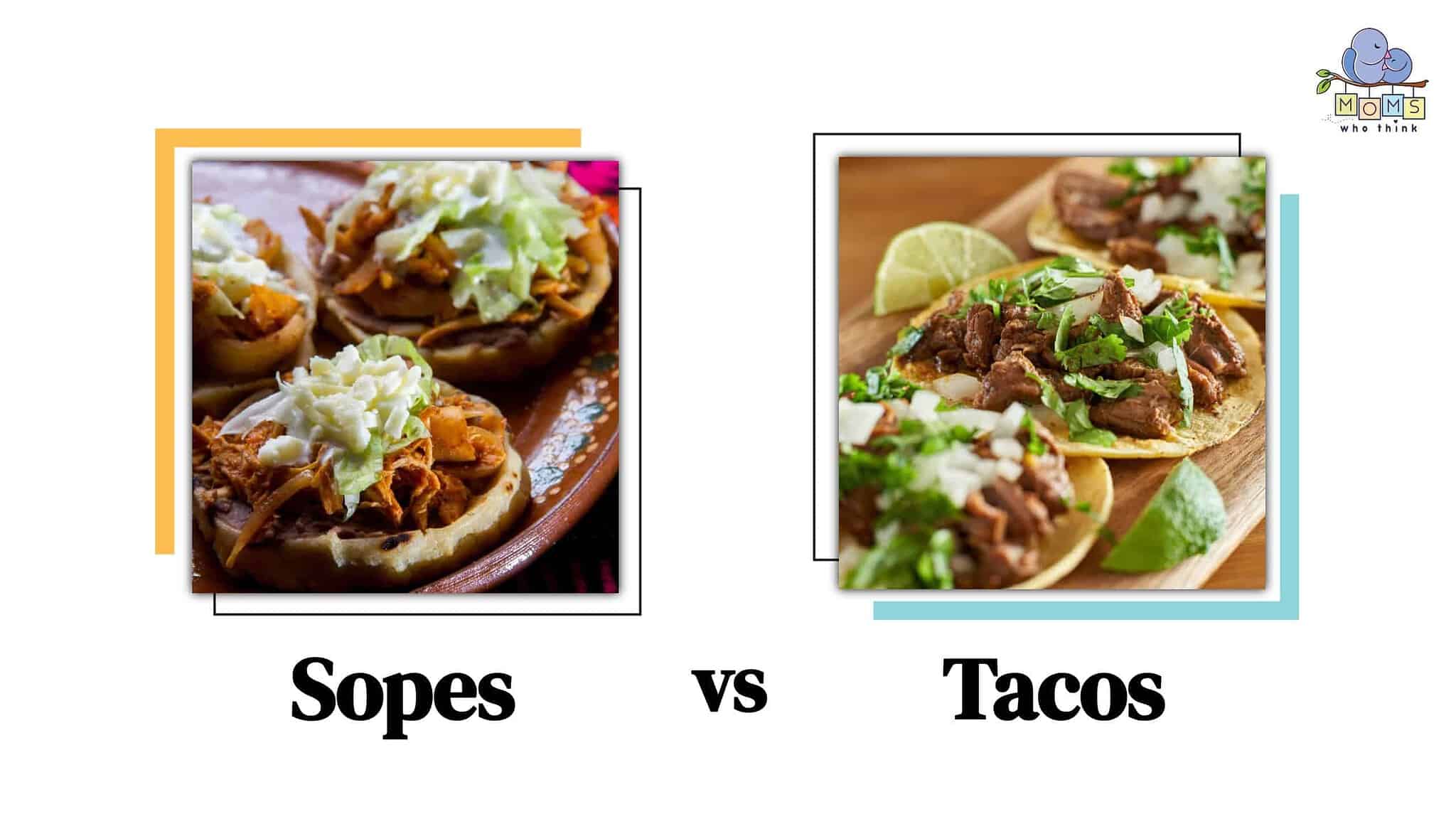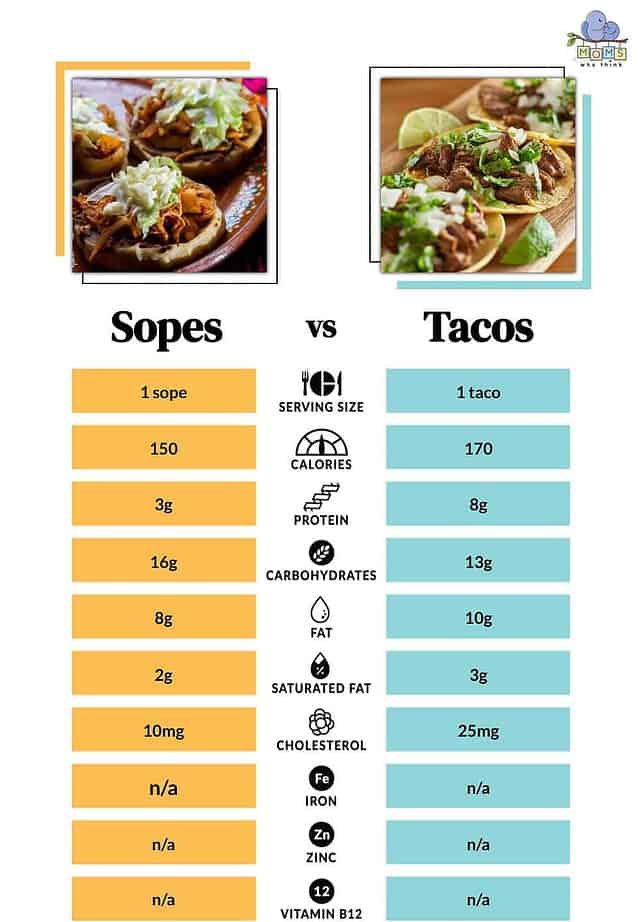Sopes Vs Tacos: A Comprehensive Guide To Understanding The Differences And Similarities
When it comes to Mexican cuisine, few dishes are as iconic and beloved as sopes and tacos. Both sopes and tacos are staples in Mexican culinary culture, each offering unique flavors, textures, and traditions. However, despite their similarities, they differ significantly in preparation, ingredients, and presentation. This article will delve into the nuances of sopes vs tacos, exploring their origins, ingredients, and cultural significance.
Mexican food has captured the hearts and taste buds of people worldwide, with its vibrant flavors and diverse range of dishes. Whether you're a food enthusiast or simply curious about the differences between these two popular dishes, this guide will provide you with all the information you need to make an informed decision.
By understanding the distinctions between sopes and tacos, you'll gain a deeper appreciation for the rich culinary heritage of Mexico. Let's dive into the world of sopes vs tacos and uncover what makes each dish unique and delicious.
Table of Contents
- Introduction
- History of Sopes
- History of Tacos
- Ingredients Used in Sopes vs Tacos
- Preparation Methods
- Presentation Differences
- Regional Variations
- Nutritional Comparison
- Popularity Around the World
- Recipes for Sopes and Tacos
- Conclusion
History of Sopes
Sopes have a rich history that dates back to the pre-Columbian era. These small, thick corn tortillas with a raised edge are believed to have originated in Central Mexico. The word "sope" is derived from the Nahuatl word "sopetl," which means "something that is soaked." Traditionally, sopes were made using masa (corn dough) and topped with various ingredients such as beans, meats, and sauces.
Over time, sopes have evolved and become a staple in Mexican cuisine. They are often served at family gatherings, festivals, and street food stalls. The versatility of sopes allows for endless variations, making them a favorite among food lovers.
History of Tacos
Tacos, on the other hand, have a slightly different origin story. The word "taco" is thought to have originated from the Spanish word "tacar," meaning "to plug" or "to stuff." Tacos have been a part of Mexican culture for centuries, with early versions consisting of corn tortillas filled with fish and other local ingredients.
- Ayesha Curry Wedding
- Woman Bites Flight Attendant
- Mens Clinical Strength Deodorant
- Will And Zach Zulock
- Verna Heath Channelview Tx
As Mexican cuisine spread across the globe, tacos gained international recognition. Today, they are enjoyed in various forms, from classic street tacos to gourmet versions served in fine dining restaurants. The adaptability of tacos has contributed to their widespread popularity.
Ingredients Used in Sopes vs Tacos
Sopes Ingredients
The primary ingredient in sopes is masa, which is made from corn kernels treated with lime (cal) and ground into a dough. Other common ingredients include:
- Beans (frijoles)
- Shredded chicken or beef
- Cheese (queso fresco)
- Cream (crema)
- Lettuce (lechuga)
- Salsa (tomato-based or green)
Tacos Ingredients
Tacos, while similar in some respects, have a wider variety of ingredients depending on the type of taco. Common ingredients include:
- Corn or flour tortillas
- Proteins such as carne asada, carnitas, or al pastor
- Vegetables like onions, cilantro, and lime
- Avocado or guacamole
- Salsas (red, green, or chipotle)
Preparation Methods
The preparation of sopes and tacos differs significantly. Sopes require the masa dough to be pressed into small circles and then pinched around the edges to create a raised border. This border helps hold the toppings in place. Once shaped, the sopes are fried or cooked on a comal until golden brown.
Tacos, on the other hand, are simpler to prepare. The tortillas are either grilled, fried, or heated on a comal, depending on the desired texture. The fillings are then added, and the taco is folded or rolled for easy eating.
Presentation Differences
One of the most noticeable differences between sopes and tacos is their presentation. Sopes are typically served flat, with toppings arranged on the raised edge to prevent them from spilling. This presentation makes sopes ideal for sharing or as an appetizer.
Tacos, in contrast, are designed for individual consumption. The folded or rolled tortilla wraps the filling, making it easy to eat on the go. This convenience has contributed to the global popularity of tacos.
Regional Variations
Both sopes and tacos have regional variations that reflect the diverse culinary traditions of Mexico. For example, in the state of Oaxaca, sopes are often topped with mole negro, a rich and complex sauce. In contrast, tacos al pastor, a popular variation found in Central Mexico, features marinated pork cooked on a vertical spit.
These regional differences highlight the creativity and adaptability of Mexican cuisine, ensuring that there is always something new to discover.
Nutritional Comparison
When it comes to nutrition, both sopes and tacos can be healthy options depending on the ingredients used. Sopes tend to be higher in carbohydrates due to the thicker masa base, but they can be made healthier by using whole-grain masa and lean proteins.
Tacos, with their thinner tortillas, generally contain fewer calories. However, the nutritional value can vary widely depending on the fillings and toppings used. For a healthier option, consider using grilled proteins and plenty of fresh vegetables.
Popularity Around the World
While both sopes and tacos have gained international recognition, tacos tend to be more widely known outside of Mexico. This popularity can be attributed to the ease of preparation and adaptability of tacos, which allow them to be customized to suit different tastes and dietary preferences.
Sopes, while less well-known globally, are gaining traction as people discover the unique flavors and textures they offer. Food festivals and Mexican restaurants worldwide are helping to introduce sopes to a broader audience.
Recipes for Sopes and Tacos
How to Make Sopes
Here's a simple recipe for making sopes at home:
- Prepare the masa dough by mixing masa harina with warm water until it forms a pliable dough.
- Divide the dough into small balls and press them into flat circles using a tortilla press or your hands.
- Pinch the edges of each circle to create a raised border.
- Cook the sopes on a hot comal or skillet until they are golden brown and slightly crispy.
- Top with your choice of beans, meat, cheese, cream, and salsa.
How to Make Tacos
Here's a simple recipe for making tacos:
- Grill or cook your choice of protein (e.g., chicken, beef, or fish) until fully cooked.
- Warm the tortillas on a comal or in a skillet.
- Assemble the tacos by placing the cooked protein on the tortilla, followed by toppings such as onions, cilantro, and lime.
- Add your favorite salsa for extra flavor.
Conclusion
In conclusion, both sopes and tacos offer delicious and authentic Mexican dining experiences. While sopes are known for their thick, raised edges and hearty toppings, tacos are celebrated for their convenience and versatility. Understanding the differences and similarities between these two dishes can enhance your appreciation for Mexican cuisine.
We invite you to explore the world of sopes and tacos further by trying out the recipes provided and sharing your experiences in the comments below. Don't forget to explore other articles on our site for more culinary insights and tips.
Data Source: Food and Agriculture Organization of the United Nations, Mexican Culinary Traditions
- Hallmark Christmas Drinking Game
- Will And Zach Zulock
- Sheila Bellush Children Now
- Sagal Twins Today
- June 2024 Festivals

Sopes vs. Tacos

Sopes vs. Tacos The Difference Between Two Iconic Dishes

Sopes vs. Tacos The Difference Between Two Iconic Dishes